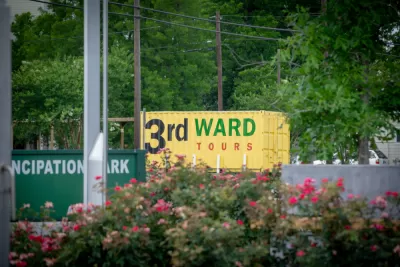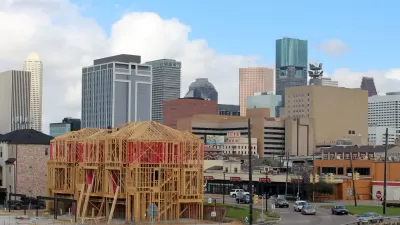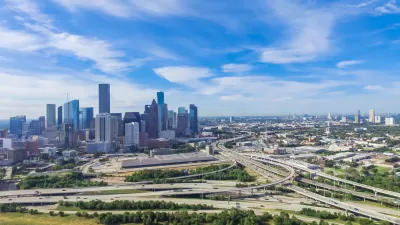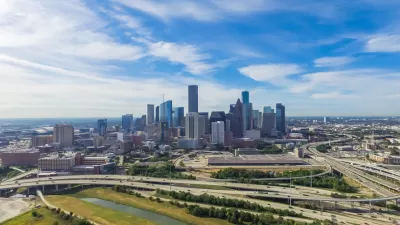These Houston communities have experienced the most dramatic demographic changes in the last decade, according to new Census data.

As the results of the 2020 Census begin to tell stories about the current state of U.S. cities, Monique Welch walks us through some of the Houston neighborhoods seeing the most dramatic demographic changes. "Recent Census data released earlier this month reveals how drastically the demographics of some of these neighborhoods have changed between 2010 and 2020."
Among these neighborhoods is Third Ward, the center of Houston's Civil Rights movement in the 1960s. There, "the Black population has dropped from 71 percent in 2010 to 45 percent today." This is in large part attributed to the "arrival of Highway 288, which razed many Black-owned homes."
Fifth Ward, the home of Houston's blues and jazz scene, has seen the loss of historic Black clubs and music venues as property values rise and new residents and businesses move in. Acres Homes, in a semi-rural area of North Houston, has seen an increase in Latino residents. Second Ward, meanwhile, saw its Latino population drop by around 25 percent between 2010 and 2020.
The article also mentions Clayton Homes, a Houston Housing Authority project that faces the threat of demolition "if current plans for the redevelopment of Interstate 45 proceed as planned." Other residents and businesses, such as Armando Lichtenberger, Jr. and his Grammy-winning band La Mafia, will also have their property seized and face displacement if the I-45 plans go through.
FULL STORY: These Houston neighborhoods are changing through gentrification. Here's a look at their past and present.

Alabama: Trump Terminates Settlements for Black Communities Harmed By Raw Sewage
Trump deemed the landmark civil rights agreement “illegal DEI and environmental justice policy.”

Study: Maui’s Plan to Convert Vacation Rentals to Long-Term Housing Could Cause Nearly $1 Billion Economic Loss
The plan would reduce visitor accommodation by 25% resulting in 1,900 jobs lost.

Planetizen Federal Action Tracker
A weekly monitor of how Trump’s orders and actions are impacting planners and planning in America.

Waymo Gets Permission to Map SF’s Market Street
If allowed to operate on the traffic-restricted street, Waymo’s autonomous taxis would have a leg up over ride-hailing competitors — and counter the city’s efforts to grow bike and pedestrian on the thoroughfare.

Parklet Symposium Highlights the Success of Shared Spaces
Parklets got a boost during the Covid-19 pandemic, when the concept was translated to outdoor dining programs that offered restaurants a lifeline during the shutdown.

Federal Homelessness Agency Places Entire Staff on Leave
The U.S. Interagency Council on Homelessness is the only federal agency dedicated to preventing and ending homelessness.
Urban Design for Planners 1: Software Tools
This six-course series explores essential urban design concepts using open source software and equips planners with the tools they need to participate fully in the urban design process.
Planning for Universal Design
Learn the tools for implementing Universal Design in planning regulations.
Caltrans
Smith Gee Studio
Institute for Housing and Urban Development Studies (IHS)
City of Grandview
Harvard GSD Executive Education
Toledo-Lucas County Plan Commissions
Salt Lake City
NYU Wagner Graduate School of Public Service





























